#sandradallas
Photo

𝑺𝒐𝒎𝒆𝒕𝒊𝒎𝒆𝒔 𝒕𝒉𝒆 𝒖𝒏𝒌𝒏𝒐𝒘𝒏 𝒂𝒉𝒆𝒂𝒅 𝒊𝒔 𝒑𝒓𝒆𝒇𝒆𝒓𝒂𝒃𝒍𝒆 𝒕𝒐 𝒕𝒉𝒆 𝒌𝒏𝒐𝒘𝒏 𝒘𝒆 𝒉𝒂𝒗𝒆 𝒍𝒆𝒇𝒕 𝒃𝒆𝒉𝒊𝒏𝒅. - 𝑺𝒂𝒏𝒅𝒓𝒂 𝑫𝒂𝒍𝒍𝒂𝒔, 𝑾𝒆𝒔𝒕𝒆𝒓𝒊𝒏𝒈 𝑾𝒐𝒎𝒂𝒏 Thank you @stmartinspress for sending me this beautiful copy of Westering Woman by Sandra Dallas. I am not feeling this Monday. May I please go back to bed and start over? I was not ready for the work day to get here. I’d rather be snuggling with my puppy. I’ve been in a funk lately and I have been thinking to cheers up, how about a giveaway? Anyone up for that? I will leave the synopsis for Westering Woman below. synopsis: From the bestselling author of Prayers for Sale, Sandra Dallas' Westering Women is an inspiring celebration of sisterhood on the perilous Overland Trail AG Journal's RURAL THEMES BOOKS FOR WINTER READING | Hasty Book Lists' BEST BOOKS COMING OUT IN JANUARY “Exciting novel ... difficult to put down.” —Booklist "If you are an adventuresome young woman of high moral character and fine health, are you willing to travel to California in search of a good husband?" It's February, 1852, and all around Chicago, Maggie sees postings soliciting "eligible women" to travel to the gold mines of Goosetown. A young seamstress with a small daughter, she has nothing to lose. She joins forty-three other women and two pious reverends on the dangerous 2,000-mile journey west. None are prepared for the hardships they face on the trek or for the strengths they didn't know they possessed. Maggie discovers she’s not the only one looking to leave dark secrets behind. And when her past catches up with her, it becomes clear a band of sisters will do whatever it takes to protect one of their own. . . . . . Hashtags ⇓ #westeringwoman #stmartinspress #sandradallas #bookishcandles #bookstoread #fortheloveofbooks #booklover #2020reads #adultsreading #historical #wereadfantasy #yabooks #youngadultreads #ireadya #yalover #bookcommunity #bookstagram #booksbooksbooks #bookworm #booknerd #fantasy #bookobsessed #youngadultbooks #historicalfiction #bookishfeatures #bookstagramfeatures #cozyreads #bookishyear #hygge #bookishcoven — view on Instagram https://ift.tt/2Oqyf3H
0 notes
Text
Regional books: “Out Where the West Begins, Vol. 2”

Cloud Camp Press
“Out Where the West Begins” by Philip F. Anschutz
When he wrote Vol. 1 of “Out Where the West Begins,” Denver oilman Philip F. Anschutz profiled 50 entrepreneurs and business leaders who influenced Western development from 1800 to 1920. All of them were men.
Vol. 2 is broader and more inclusive. It profiles more than 100 people who contributed to the making of western America, many of them minorities and women. Virtually all of the subjects are well known. Anschutz breaks no new ground here. In fact, Vol. 2 is a sort of laundry list of famous Americans who related to the West, from John Quincy Adams, Daniel Boone and Mark Twain to Judge Ben Lindsey and Helen Hunt Jackson. The brief biographies — written with his co-author, Colorado State Historian William J. Convery — are breezy and interesting but contain little that has not been published before. The book’s value is that it is a single reference to the most important men and women who developed the West.
The second volume is divided into five sections: Leaders and policymakers, religious leaders, image-makers, explorers and inventors. Included in the many subsections are Indian leaders, civil rights pioneers and suffragists.
The book begins with Thomas Jefferson, whose “vision of an ‘Empire for Liberty’ … had far-reaching consequences,” Anschutz writes. Other politicians, including Adams, James K. Polk and Theodore Roosevelt, also promoted their visions for the West.
All that is pretty tame stuff. More interesting is the section on chroniclers of the Old Frontier. Helen Hunt Jackson wrote the romantic novel “Ramona” to protest treatment of American Indians. It became a sort of a Native American “Uncle Tom’s Cabin” and has never been out of print. Owen Wister’s “Virginian,” the most famous novel of the American West, enshrined the cowboy as America’s super hero and established the “Code of the West.” It has spawned thousands of cowboy novels.
Related Articles
September 26, 2017 Sloan’s “Sourdough” combines love of high-tech and old ways
September 21, 2017 Book review: Vietnam War through lives of those profoundly shaped by it
September 21, 2017 Regional books: “Navajo Textiles,” “Spoken Through Clay”
September 21, 2017 Why Longmire doesn’t — and wouldn’t — carry a cellphone
September 21, 2017 Book review: Celeste Ng grapples with both sides of the debate over interracial adoptions
Equally intriguing is the section on Western inventors. “The challenges of the West inspired a culture of new ideas and adaptability that encouraged innovation and experimentation,” Anschutz writes. Among those innovators was John Deere, whose steel plow allowed farmers to rip up the prairie, and Joseph F. Glidden, who pioneered barbed wire. The wire, called the “devil’s rope” by free-range cattlemen, allowed settlers to protect crops by fencing bison and cattle out and keeping their livestock in. By 1880, Glidden was manufacturing 40,000 tons of the stuff.
At the end of the 19th century, historian Frederick Jackson Turner pronounced the frontier closed, but “it never really ended at all in some parts of the American West as far as I can tell,” Anschutz writes. Indeed, the subjects profiled not only developed the West but left a culture of independence and inventiveness that still exists.
These Westerners, Anschutz concludes, “shaped and sculpted the American West’s political, economic and social identity into the forms we recognize today.”
Sandra Dallas is a Denver author. Reach her at [email protected]
from News And Updates http://www.denverpost.com/2017/09/27/out-where-the-west-begins-volume-2-philip-anschutz/
0 notes
Text
Regional books: “Out Where the West Begins, Vol. 2”

Cloud Camp Press
“Out Where the West Begins” by Philip F. Anschutz
When he wrote Vol. 1 of “Out Where the West Begins,” Denver oilman Philip F. Anschutz profiled 50 entrepreneurs and business leaders who influenced Western development from 1800 to 1920. All of them were men.
Vol. 2 is broader and more inclusive. It profiles more than 100 people who contributed to the making of western America, many of them minorities and women. Virtually all of the subjects are well known. Anschutz breaks no new ground here. In fact, Vol. 2 is a sort of laundry list of famous Americans who related to the West, from John Quincy Adams, Daniel Boone and Mark Twain to Judge Ben Lindsey and Helen Hunt Jackson. The brief biographies — written with his co-author, Colorado State Historian William J. Convery — are breezy and interesting but contain little that has not been published before. The book’s value is that it is a single reference to the most important men and women who developed the West.
The second volume is divided into five sections: Leaders and policymakers, religious leaders, image-makers, explorers and inventors. Included in the many subsections are Indian leaders, civil rights pioneers and suffragists.
The book begins with Thomas Jefferson, whose “vision of an ‘Empire for Liberty’ … had far-reaching consequences,” Anschutz writes. Other politicians, including Adams, James K. Polk and Theodore Roosevelt, also promoted their visions for the West.
All that is pretty tame stuff. More interesting is the section on chroniclers of the Old Frontier. Helen Hunt Jackson wrote the romantic novel “Ramona” to protest treatment of American Indians. It became a sort of a Native American “Uncle Tom’s Cabin” and has never been out of print. Owen Wister’s “Virginian,” the most famous novel of the American West, enshrined the cowboy as America’s super hero and established the “Code of the West.” It has spawned thousands of cowboy novels.
Related Articles
September 26, 2017 Sloan’s “Sourdough” combines love of high-tech and old ways
September 21, 2017 Book review: Vietnam War through lives of those profoundly shaped by it
September 21, 2017 Regional books: “Navajo Textiles,” “Spoken Through Clay”
September 21, 2017 Why Longmire doesn’t — and wouldn’t — carry a cellphone
September 21, 2017 Book review: Celeste Ng grapples with both sides of the debate over interracial adoptions
Equally intriguing is the section on Western inventors. “The challenges of the West inspired a culture of new ideas and adaptability that encouraged innovation and experimentation,” Anschutz writes. Among those innovators was John Deere, whose steel plow allowed farmers to rip up the prairie, and Joseph F. Glidden, who pioneered barbed wire. The wire, called the “devil’s rope” by free-range cattlemen, allowed settlers to protect crops by fencing bison and cattle out and keeping their livestock in. By 1880, Glidden was manufacturing 40,000 tons of the stuff.
At the end of the 19th century, historian Frederick Jackson Turner pronounced the frontier closed, but “it never really ended at all in some parts of the American West as far as I can tell,” Anschutz writes. Indeed, the subjects profiled not only developed the West but left a culture of independence and inventiveness that still exists.
These Westerners, Anschutz concludes, “shaped and sculpted the American West’s political, economic and social identity into the forms we recognize today.”
Sandra Dallas is a Denver author. Reach her at [email protected]
from Latest Information http://www.denverpost.com/2017/09/27/out-where-the-west-begins-volume-2-philip-anschutz/
0 notes
Text
Regional books: “Out Where the West Begins, Vol. 2”

Cloud Camp Press
“Out Where the West Begins” by Philip F. Anschutz
When he wrote Vol. 1 of “Out Where the West Begins,” Denver oilman Philip F. Anschutz profiled 50 entrepreneurs and business leaders who influenced Western development from 1800 to 1920. All of them were men.
Vol. 2 is broader and more inclusive. It profiles more than 100 people who contributed to the making of western America, many of them minorities and women. Virtually all of the subjects are well known. Anschutz breaks no new ground here. In fact, Vol. 2 is a sort of laundry list of famous Americans who related to the West, from John Quincy Adams, Daniel Boone and Mark Twain to Judge Ben Lindsey and Helen Hunt Jackson. The brief biographies — written with his co-author, Colorado State Historian William J. Convery — are breezy and interesting but contain little that has not been published before. The book’s value is that it is a single reference to the most important men and women who developed the West.
The second volume is divided into five sections: Leaders and policymakers, religious leaders, image-makers, explorers and inventors. Included in the many subsections are Indian leaders, civil rights pioneers and suffragists.
The book begins with Thomas Jefferson, whose “vision of an ‘Empire for Liberty’ … had far-reaching consequences,” Anschutz writes. Other politicians, including Adams, James K. Polk and Theodore Roosevelt, also promoted their visions for the West.
All that is pretty tame stuff. More interesting is the section on chroniclers of the Old Frontier. Helen Hunt Jackson wrote the romantic novel “Ramona” to protest treatment of American Indians. It became a sort of a Native American “Uncle Tom’s Cabin” and has never been out of print. Owen Wister’s “Virginian,” the most famous novel of the American West, enshrined the cowboy as America’s super hero and established the “Code of the West.” It has spawned thousands of cowboy novels.
Related Articles
September 26, 2017 Sloan’s “Sourdough” combines love of high-tech and old ways
September 21, 2017 Book review: Vietnam War through lives of those profoundly shaped by it
September 21, 2017 Regional books: “Navajo Textiles,” “Spoken Through Clay”
September 21, 2017 Why Longmire doesn’t — and wouldn’t — carry a cellphone
September 21, 2017 Book review: Celeste Ng grapples with both sides of the debate over interracial adoptions
Equally intriguing is the section on Western inventors. “The challenges of the West inspired a culture of new ideas and adaptability that encouraged innovation and experimentation,” Anschutz writes. Among those innovators was John Deere, whose steel plow allowed farmers to rip up the prairie, and Joseph F. Glidden, who pioneered barbed wire. The wire, called the “devil’s rope” by free-range cattlemen, allowed settlers to protect crops by fencing bison and cattle out and keeping their livestock in. By 1880, Glidden was manufacturing 40,000 tons of the stuff.
At the end of the 19th century, historian Frederick Jackson Turner pronounced the frontier closed, but “it never really ended at all in some parts of the American West as far as I can tell,” Anschutz writes. Indeed, the subjects profiled not only developed the West but left a culture of independence and inventiveness that still exists.
These Westerners, Anschutz concludes, “shaped and sculpted the American West’s political, economic and social identity into the forms we recognize today.”
Sandra Dallas is a Denver author. Reach her at [email protected]
from Latest Information http://www.denverpost.com/2017/09/27/out-where-the-west-begins-volume-2-philip-anschutz/
0 notes
Text
Regional books: “Out Where the West Begins, Vol. 2”

Cloud Camp Press
“Out Where the West Begins” by Philip F. Anschutz
When he wrote Vol. 1 of “Out Where the West Begins,” Denver oilman Philip F. Anschutz profiled 50 entrepreneurs and business leaders who influenced Western development from 1800 to 1920. All of them were men.
Vol. 2 is broader and more inclusive. It profiles more than 100 people who contributed to the making of western America, many of them minorities and women. Virtually all of the subjects are well known. Anschutz breaks no new ground here. In fact, Vol. 2 is a sort of laundry list of famous Americans who related to the West, from John Quincy Adams, Daniel Boone and Mark Twain to Judge Ben Lindsey and Helen Hunt Jackson. The brief biographies — written with his co-author, Colorado State Historian William J. Convery — are breezy and interesting but contain little that has not been published before. The book’s value is that it is a single reference to the most important men and women who developed the West.
The second volume is divided into five sections: Leaders and policymakers, religious leaders, image-makers, explorers and inventors. Included in the many subsections are Indian leaders, civil rights pioneers and suffragists.
The book begins with Thomas Jefferson, whose “vision of an ‘Empire for Liberty’ … had far-reaching consequences,” Anschutz writes. Other politicians, including Adams, James K. Polk and Theodore Roosevelt, also promoted their visions for the West.
All that is pretty tame stuff. More interesting is the section on chroniclers of the Old Frontier. Helen Hunt Jackson wrote the romantic novel “Ramona” to protest treatment of American Indians. It became a sort of a Native American “Uncle Tom’s Cabin” and has never been out of print. Owen Wister’s “Virginian,” the most famous novel of the American West, enshrined the cowboy as America’s super hero and established the “Code of the West.” It has spawned thousands of cowboy novels.
Related Articles
September 26, 2017 Sloan’s “Sourdough” combines love of high-tech and old ways
September 21, 2017 Book review: Vietnam War through lives of those profoundly shaped by it
September 21, 2017 Regional books: “Navajo Textiles,” “Spoken Through Clay”
September 21, 2017 Why Longmire doesn’t — and wouldn’t — carry a cellphone
September 21, 2017 Book review: Celeste Ng grapples with both sides of the debate over interracial adoptions
Equally intriguing is the section on Western inventors. “The challenges of the West inspired a culture of new ideas and adaptability that encouraged innovation and experimentation,” Anschutz writes. Among those innovators was John Deere, whose steel plow allowed farmers to rip up the prairie, and Joseph F. Glidden, who pioneered barbed wire. The wire, called the “devil’s rope” by free-range cattlemen, allowed settlers to protect crops by fencing bison and cattle out and keeping their livestock in. By 1880, Glidden was manufacturing 40,000 tons of the stuff.
At the end of the 19th century, historian Frederick Jackson Turner pronounced the frontier closed, but “it never really ended at all in some parts of the American West as far as I can tell,” Anschutz writes. Indeed, the subjects profiled not only developed the West but left a culture of independence and inventiveness that still exists.
These Westerners, Anschutz concludes, “shaped and sculpted the American West’s political, economic and social identity into the forms we recognize today.”
Sandra Dallas is a Denver author. Reach her at [email protected]
from News And Updates http://www.denverpost.com/2017/09/27/out-where-the-west-begins-volume-2-philip-anschutz/
0 notes
Text
#FlashbackFriday - Alice's Tulips by Sandra Dallas #Review / #Giveaway


On Flashback Fridays I will share with you
the books I was not able to review
when they were first released that have been screaming at me
from my To-Be-Read bookshelf.
This book has been on my shelf for a long time. I picked it up at a used bookstore several years ago. When I was looking for a book set in Iowa for my Literary Escape Challenge this one popped up and I knew I had a copy of it somewhere around here. It was just a little buried on my TBR shelf.

Alice's Tulips
Historical Fiction/Mystery
Setting - Iowa
St. Martin's Press (October 16, 2000)
Hardcover : 240 pages
ISBN-10 : 0312203594
ISBN-13 : 978-0312203597
St. Martin's Griffin (September 18, 2001)
Paperback : 256 pages
ISBN-10 : 0312283784
ISBN-13 : 978-0312283780
St. Martin's Press; 1st edition (April 1, 2007)
Kindle Print length : 295 pages
ASIN : B001QS9TP2

Alice Bullock is a young newlywed whose husband, Charlie, has just joined the Union Army, leaving her on his Iowa farm with only his formidable mother for company. Equally talented at sewing and gossip, and not overly fond of hard work, Alice writes lively letters to her sister filled with accounts of local quilting bees, the rigors of farm life, and the customs of small-town America. But no town is too small for intrigue and treachery, and when Alice finds herself accused of murder, she must rely on support from unlikely sources.
Dollycas's Thoughts
Eighteen-year-old Alice Bullock had been married just 6 months when her husband Charlie left her and his mother on the Iowa family farm to join the Union Army. It is not the life Alice expected at all but she had no choice but to pitch in and do the hard work alongside her mother-in-law. She does enjoy quilting and she and the local ladies start to make quilts using her design for the troops. Sadly, she has drawn the attention of a local man and he doesn't appreciate her rebuffing his advances. When the man is found dead everyone knows he was pursuing young Alice so they believe she killed him.
Will she be cleared of the crime? Will Charlie come home?
The original interest I had in this book was the quilting theme and the cover grabbed my attention. Before each chapter, there is a description and history of a block pattern.
The entire story is told in letters that Alice writes to her sister Lizzie in Illinois and to her husband Charlie. At first, I wasn't sure if I could read a whole book set up that way but soon I was hooked by Alice's reports and replies to her sister who was also facing turmoil in her own marriage. Alice was basically written off by her parents so her sister was the only one of her family members she was communicating with and that added a little twist. Her letters to Charlie were more to support him and let him know how much she missed him. Any problems on the homefront were not reported to him. He could do nothing about them and she and her mother-in-law knew he needed to concentrate on staying alive. Alice and for that matter all the characters change a lot over the course of the book by the things they must endure and just daily life in the 1860s with a country at war. The relationships evolve in interesting ways. Sandra Dallas is known for creating and writing about strong women. This book is full of them.
The murder mystery happens later in the story but it is a very important part of the story. Alice really had to grow a tough skin and depend on people she could trust to get passed the gossip, dirty looks, snide comments, and back-turning. There are some great twists that turn the mystery on its head, not once but twice.
I ended up really enjoying the unique way the author told the history of the time in the small Iowa town.
Alice's Tulips was such an interesting story. The letters very filled with depth and surprising topics. Things you would only share with your sister or with a husband you love and miss so much.


Your Escape Into A Good Book Travel Agent

About the Author (from Amazon)
Dubbed "a quintessential American voice" by Jane Smiley, in Vogue Magazine, Sandra Dallas is a New York Times bestselling author of more than a dozen adult novels, several children's novels, and numerous works of non-fiction about Western subjects. Her adult novels, which include Prayers for Sale, Tallgrass, and The Persian Pickle Club, all share themes of loyalty, friendship, and human dignity and have been translated into a dozen foreign languages and have been optioned for films. Her work has won or been nominated for numerous awards and prizes and in 2021, she was inducted into the Colorado Authors' Hall of Fame. A former bureau chief for BusinessWeek magazine, Sandra lives in Denver and Georgetown, Colorado with her husband and with her two grown daughters nearby.
Author Links
Website - Facebook
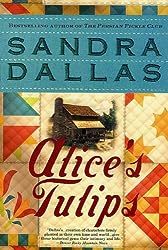
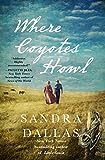



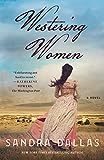
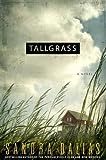
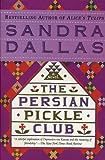
Find More Books By Sandra Dallas Here.

I am giving away my used paperback copy!
The contest is open to anyone over 18 years old
with a US or Canadian mailing address.
Duplicate entries will be deleted. Void where prohibited.
You do not have to be a follower to enter but I hope you will find
something you like here and become a follower.
Followers Will Receive 2 Bonus Entries For Each Way They Follow.
Plus 2 Bonus Entries For Following My Facebook Fan Page.
Add this book to your WANT TO READ shelf on GoodReads
for 3 Bonus Entries.
Pin this giveaway to Pinterest for 3 Bonus Entries.
If you share the giveaway on Twitter or Facebook or anywhere you will receive 5 Bonus Entries For Each Link.
The Contest Will End September 8, 2023, at 11:59 PM CST
The Winner Will Be Chosen By Random.org
The Winner Will Be Notified By Email
and Will Be Posted Here In The Sidebar.
Click Here For Entry Form
*This book was from my private collection.
Read the full article
0 notes
Photo

#neuzugang #newbook #dasbrauthaus #sandradallas #weltbildverlag #lovetoread #lovebooks #bookstagram #booksofig #booknerd #booknerdsofinstagram #Buch #lesen
#sandradallas#neuzugang#buch#weltbildverlag#booknerd#booksofig#newbook#booknerdsofinstagram#lovetoread#dasbrauthaus#lesen#bookstagram#lovebooks
0 notes
Photo

Finished #redberrieswhitecloudsbluesky by #sandradallas on Friday. I thought it was going to be to sad to read but it wasnt. I enjoyed the book and all the characters. I cant wait to start the other books by this author. Also those are chocolate covered raisins that my MIL brought back from Chicago. Very yummy.
0 notes
Audio
"Photograph" - Ed Sheeran
#SoundCloud#SandraDallas#Photograph by Ed Sheeran#Ed Sheeran#music#help I think I found a song for my ships#definitely for one of my OTPs#Rumbelle#I'm looking at you#a day in the life of this fangirl#also this song just sounds so pretty#I guess I just really like the song arrangement?
3 notes
·
View notes
Text
Regional Books: “Ruby Dreams,” “Blood Highway” and more new releases

(University of Nebraska Press)
Ruby Dreams of Janis Joplin
By Mary Clearman Blew
(University of Nebraska)
Ruby Gervais was 16 when she ran away from the turmoil in her small Versailles, Mont., town to join the Rivermen, a pop band. Now, 10 years later, the band has disintegrated, and Ruby returns home to find that not much has changed. She is a victim of her past.
Townspeople still remember that she was one of the children who charged adults with pedophilia and satanic rituals. Never mind that Ruby was only 8 at the time and came to believe the false charges after they were pounded into her by her foster father.
Ruby is also haunted by the savageness of the band’s breakup and her love for one of the Rivermen. His mental breakdown is so severe that he’ll be institutionalized for the rest of his life.
Related Articles
Broomfield library system will go fine-free in 2019
Regional books: “The Bonanza King,” “Phoebe Apperson Hearst” and more
All this sounds pretty grim, and it is, but the starkness is relieved by the finely honed writing of author Mary Clearman Blew. A Montana native, Blew writes with insight and humor. Haunting the book is Ruby’s love of music, which is threaded through scenes past and present. Not only is Ruby a singer and pianist, but her half-brother, Isiah, is a musician, and the grandmother who takes her in is a piano teacher. Ruby remembers snatches of songs as she faces old enemies and develops friendships.
Blew’s characters are finely wrought Westerners, and the book has a real sense of place evidenced by the way the locals mispronounce the name of the town of Versailles: “Ver-sails.”

(Algonquin Books)
Blood Highway
By Gina Wohlsdorf
(Algonquin Books)
In her second novel, Colorado author Gina Wohlsdorf tells a chilling tale of a 17-year-old girl kidnapped by her bank-robber father who is searching for lost loot. It is a complicated story that shows people are not always who they appear to be.
Rainy Cain already has a difficult life. Her whacked-out mother has a chain on the refrigerator so that Rainy has to steal food or eat from garbage cans. The mother, who appears to neighbors to be the perfect 1950-type homemaker, refuses to have anything to do with her daughter and in fact has not spoken to her in years.
Then Rainy comes home one day to discover her mother has committed suicide. A police officer sympathizes with her, and when he discovers there is no place for Rainy to stay, he takes her to his home for the night. No hanky-panky. He’s a good guy.
Still, he can’t keep two men from kidnapping Rainy. One of them is the father Rainy’s never met. He, too, appears to be a good guy, but over time, Rainy discovers he’s a psychopath who believes his daughter knows where her mother hid $4 million taken from a bank robbery. The sometimes improbable story has the cop chasing all over the country after Rainy.
One nice touch in this action-filled thriller is the father’s accomplice, who turns out to be an intriguing character.

(Crooked Lane)
Burning Ridge
By Margaret Mizushima
(Crooked Lane)
Mattie Cobb has tackled a number of Timber Creek, Colo., mysteries, with the help of her German police dog, Robo. But she’s not prepared for the murder of a young man who was tortured, burned and buried high in the mountains.
That’s because the body is that of her estranged brother, Willie. The two were separated as young children after their abusive father was sent to prison for attacking their mother. Mattie and Willie had only recently reconnected, although they had not yet gotten together. Mattie can find no reason why, after vowing he would never return to Timber Creek, Willie is murdered there.
Mattie’s friend, Cole Walker, a veterinarian, finds the body and is determined to be part of the investigation, mainly to protect Mattie. The two have begun a discreet relationship although, haunted by her father’s sexual attacks, Mattie is reluctant to commit herself.
Then Mattie and other members of the sheriff’s department discover three other graves dating back years. Mattie begins to suspect people she knows — wildlife managers and the father of a girl she has taken under her wing.
“Burning Ridge” is a suspenseful story, and Mattie is an engaging character. So is her K-9 partner Robo, who is front and center in the Timber Creek mysteries.

(Down & Out Books)
American History
By J.L. Abramo
(Down & Out Books)
A century-old feud between two Sicilian families is the basis of a multi-generational book by Denver author J.L. Abramo.
Against their families’ wishes, Guiseppe Agnello marries Francesca Leone and takes her to America. When Guiseppe joins the Army during World War I, Francesca and her son move in with her brother, Vincenzo, in Philadelphia. After she dies, Vincenzo moves to San Francisco, where he raises the son as his own.
Guiseppe returns home to find his wife and son have disappeared and spends his life searching for them.
Fast-forward to the current time when scions of the two families are locked in a deadly vendetta.
“American History” is a lively tale, although it suffers from too many characters and, at times, a lack of focus.
Contact Sandra Dallas at [email protected]
from News And Updates https://www.denverpost.com/2018/09/23/regional-books-september/
0 notes